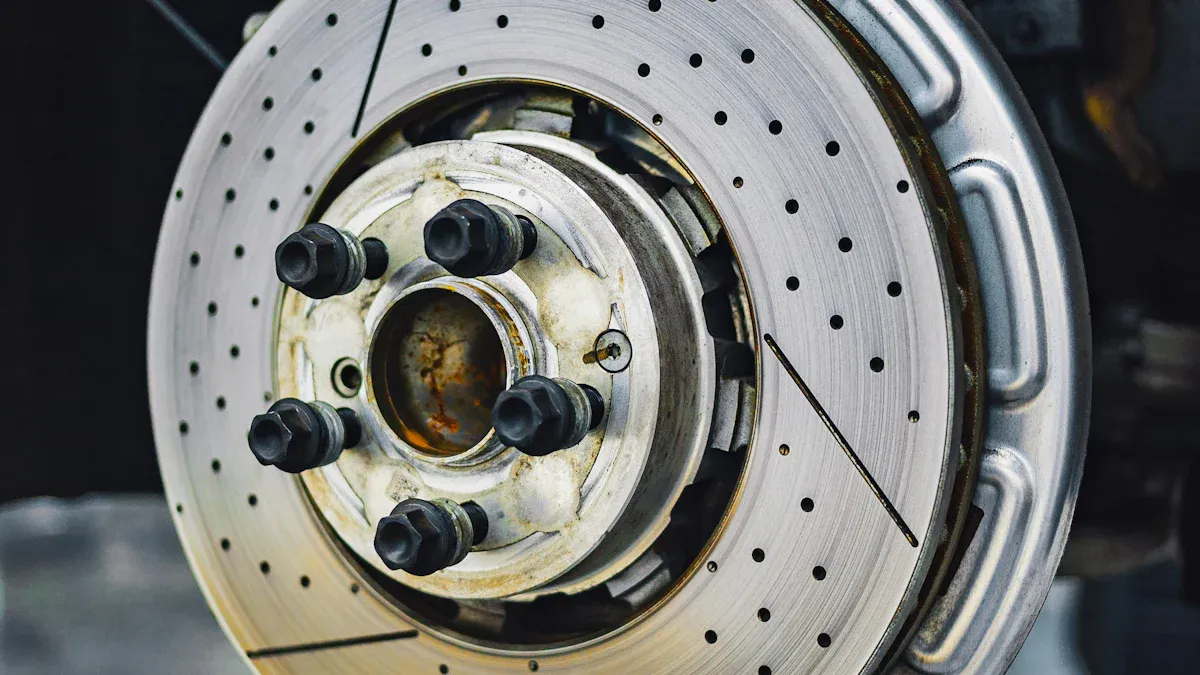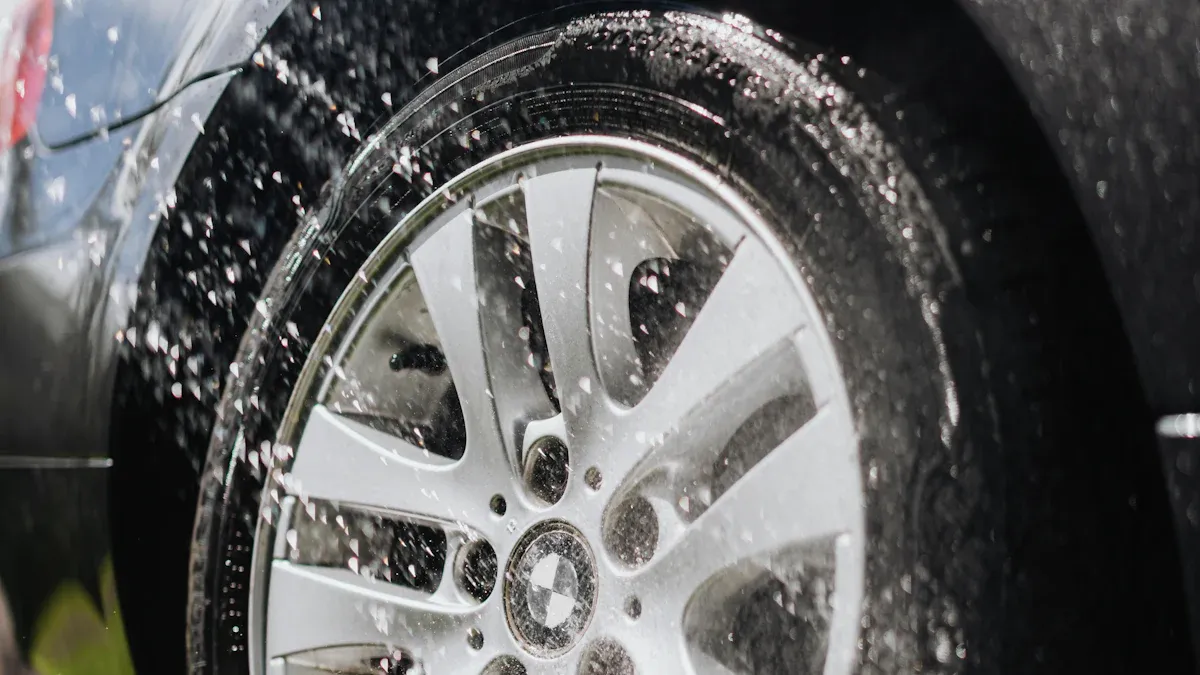
An automatic slack adjuster plays a vital role in maintaining proper brake function in commercial vehicles. Failures often occur due to preventable issues like poor maintenance or contamination. You can avoid these problems by understanding their causes and taking proactive steps. This ensures your vehicle’s braking system remains safe and reliable.
Key Takeaways
- Check your automatic slack adjuster often for wear or damage.
- Use the right grease to stop parts from sticking.
- Follow the maker’s instructions to keep brakes working safely.
Common Causes of Automatic Slack Adjuster Failure

Lack of Proper Lubrication
Lubrication is essential for the smooth operation of an automatic slack adjuster. Without it, the internal components can seize or wear out prematurely. You might notice reduced braking efficiency or uneven brake application when lubrication is insufficient. Regularly applying the correct type of grease ensures the adjuster functions as intended and prevents costly repairs.
Improper Installation or Adjustment
Incorrect installation often leads to slack adjuster failure. If the adjuster is not aligned properly or adjusted according to the manufacturer’s specifications, it may not maintain the correct brake clearance. This can result in inconsistent braking or even brake failure. Always follow the installation guidelines to avoid these issues.
Wear and Tear on Components
Over time, the moving parts of an automatic slack adjuster experience wear and tear. This is especially true in vehicles that operate under heavy loads or harsh conditions. Worn components can cause the adjuster to lose its ability to self-regulate, leading to unsafe braking performance. Inspecting and replacing worn parts promptly can prevent this.
Manual Adjustments Interfering with Functionality
Manually adjusting an automatic slack adjuster can disrupt its self-regulating mechanism. This interference often causes the adjuster to malfunction, leading to improper brake clearance. You should avoid manual adjustments unless absolutely necessary and only after consulting the manufacturer’s guidelines.
Contamination from Dirt, Debris, or Moisture
Contaminants like dirt, debris, or moisture can infiltrate the adjuster and compromise its performance. These elements can cause internal corrosion or block the mechanism, leading to failure. Keeping the adjuster clean and protected from environmental exposure helps maintain its functionality.
Use of Incorrect Grease During Maintenance
Using the wrong type of grease can harm the adjuster’s internal components. Some greases may not provide adequate lubrication or could even cause damage. Always use the grease recommended by the manufacturer to ensure optimal performance.
Parking Brake Issues Affecting Functionality
A malfunctioning parking brake can impact the operation of the automatic slack adjuster. If the parking brake does not release fully, it can cause excessive wear on the adjuster and related components. Address parking brake problems immediately to avoid further damage.
Signs of a Failing Automatic Slack Adjuster
Uneven or Inconsistent Braking
Uneven braking is one of the first signs of a failing automatic slack adjuster. You might notice that one side of the vehicle brakes harder than the other. This imbalance can make the vehicle difficult to control, especially during sudden stops. Regularly checking the braking system helps you catch this issue early.
Excessive Brake Pedal Travel
When the brake pedal feels unusually soft or travels farther than normal, it could indicate a problem with the slack adjuster. This happens when the adjuster fails to maintain the correct brake clearance. If you experience this, inspect the adjuster immediately to prevent further complications.
Overheating Brakes
Overheating brakes often result from a malfunctioning automatic slack adjuster. When the adjuster doesn’t maintain proper clearance, the brakes may drag. This generates excessive heat, which can damage the braking system. Pay attention to any burning smells or reduced braking performance.
Unusual Noises During Braking
Strange noises, such as grinding or squealing, can signal a failing slack adjuster. These sounds often occur when the adjuster’s components wear out or become misaligned. Addressing these noises promptly can save you from costly repairs.
Visible Damage, Corrosion, or Cracks
Inspect the slack adjuster for visible signs of damage. Cracks, rust, or other forms of corrosion can compromise its functionality. Replacing a damaged adjuster ensures your braking system remains safe and reliable.
Prevention and Maintenance Tips for Automatic Slack Adjusters

Conduct Regular Inspections
Inspecting your automatic slack adjuster regularly helps you identify potential issues early. Look for signs of wear, corrosion, or damage. Pay attention to the adjuster’s alignment and ensure it operates smoothly. Regular inspections reduce the risk of unexpected failures and keep your braking system reliable.
Ensure Proper Lubrication with Recommended Grease
Lubrication is critical for the adjuster’s performance. Use the grease recommended by the manufacturer to prevent internal components from seizing or wearing out. Apply lubrication during routine maintenance to ensure the adjuster functions efficiently. Neglecting this step can lead to costly repairs.
Follow Manufacturer Guidelines for Installation and Maintenance
Always adhere to the manufacturer’s guidelines when installing or maintaining the adjuster. These instructions provide specific details about proper alignment, torque settings, and lubrication requirements. Following these guidelines ensures the adjuster operates as intended and extends its lifespan.
Avoid Manual Adjustments
Avoid manually adjusting an automatic slack adjuster. Manual adjustments interfere with its self-regulating mechanism and can cause improper brake clearance. If adjustments are necessary, consult the manufacturer’s instructions or seek professional assistance.
Address Parking Brake Issues Promptly
A faulty parking brake can strain the adjuster and related components. Ensure the parking brake releases fully during operation. Address any issues immediately to prevent excessive wear and maintain the adjuster’s functionality.
Replace Worn or Damaged Components Immediately
Replace any worn or damaged parts of the adjuster without delay. Ignoring these issues can compromise the braking system’s safety. Using high-quality replacement parts ensures the adjuster continues to perform effectively.
Tip: Proactive maintenance not only prevents failures but also extends the lifespan of your automatic slack adjuster.
Automatic slack adjusters play a critical role in keeping your vehicle’s braking system safe and efficient. Failures often stem from preventable issues such as poor maintenance, contamination, or incorrect installation.
Tip: Regular inspections and proper lubrication can help you avoid costly repairs.
By following manufacturer guidelines and replacing worn components promptly, you ensure safety and extend the lifespan of your braking system.
FAQ
What happens if you manually adjust an automatic slack adjuster?
Manual adjustments disrupt the self-regulating mechanism. This leads to improper brake clearance and potential failure. Always follow the manufacturer’s guidelines to avoid damaging the adjuster.
How often should you inspect automatic slack adjusters?
Inspect them during every routine maintenance check. Regular inspections help you identify wear, contamination, or damage early, ensuring your braking system remains safe and efficient.
Can you use any grease for lubrication?
No, you must use the grease recommended by the manufacturer. Incorrect grease can harm internal components and reduce the adjuster’s efficiency.
Tip: Always consult your vehicle’s manual for specific maintenance recommendations.
Post time: Feb-20-2025

